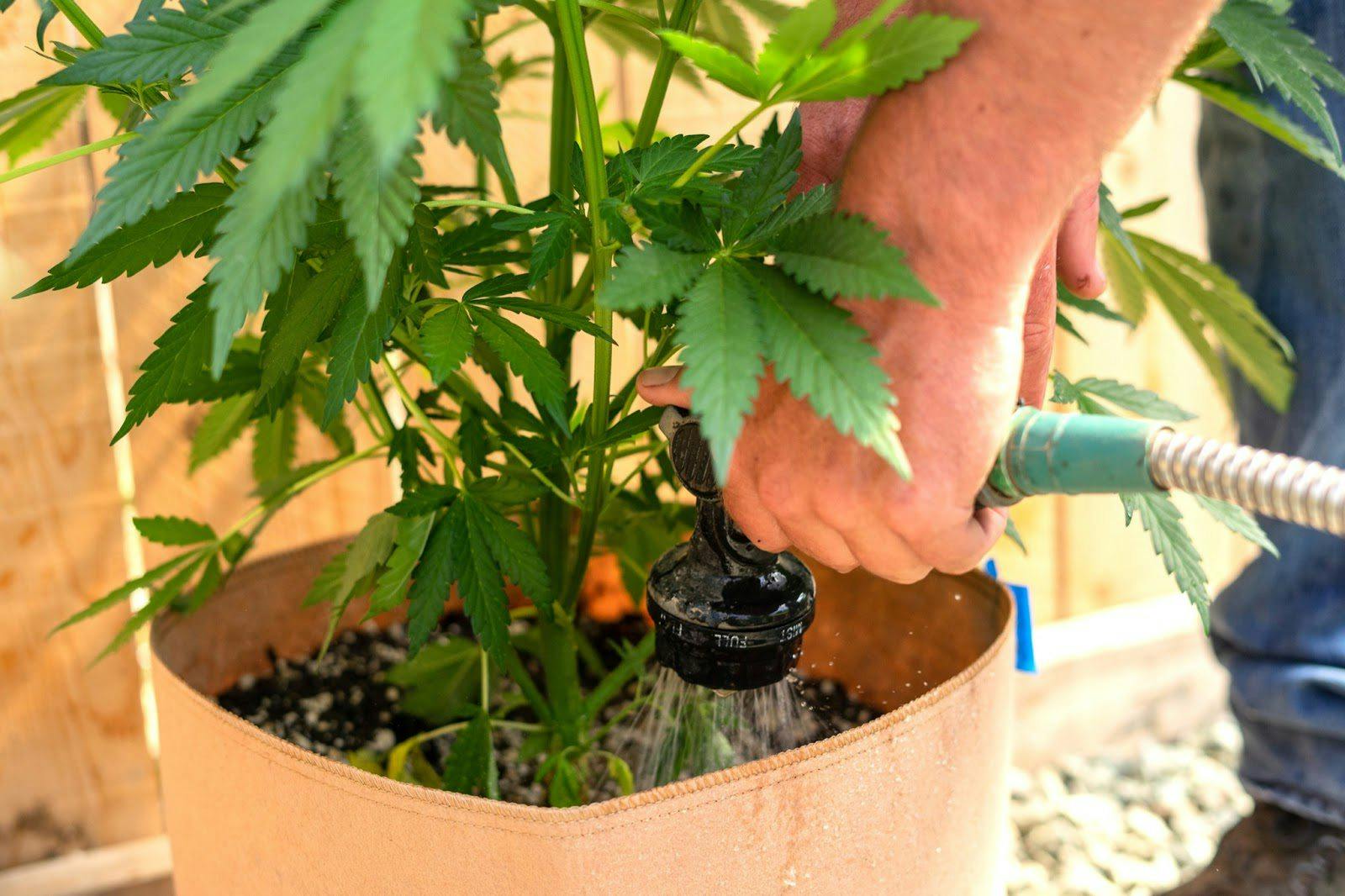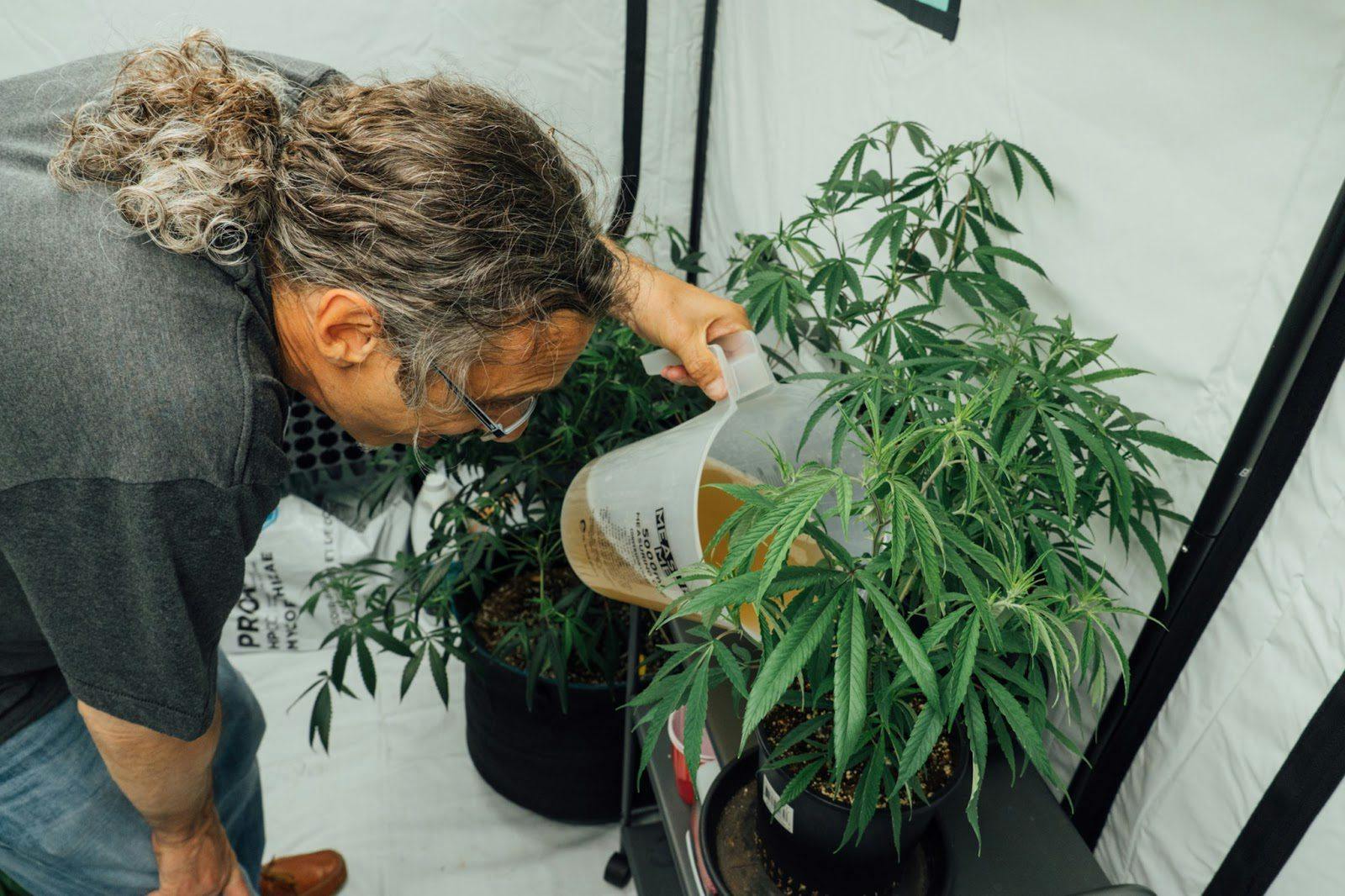How to Lower Ph in Water for Plants

Article written by

Homegrown Cannabis Co.American Seed Bank and Cultivation Experts
Content reviewed by

Dr. Lewis JasseyMedical Director - Pediatric Medicine
Do you know how to lower the pH in your water for plants? Various acids will do the trick.
Whether cultivating in soil or hydroponics, the acidity of your growing medium is vital to marijuana health. The roots can’t absorb minerals when pH exceeds their preferred range, so plant growth and harvests suffer.
Get your medical marijuana card
Connect with a licensed physician online in minutes.
Why pH Matters
The power of hydrogen (pH) measures how acidic or alkaline a solution is. We express it on a 1-14 scale:
- A value of 7.0 is neutral (like pure water at 77°F)
- Values under 7.0 are acidic (like vinegar)
- Values over 7.0 are alkaline (like bleach and soap)
Why does this chemistry lesson matter for marijuana growers? Because it’s one of the essential factors for getting high yields.
Plants require minerals to fuel development. They suffer nutrient deficiencies, stunted growth, and severe health problems if they can’t access food. Even with the highest-quality seeds, cannabis is a bit fussy in this respect. It’s only capable of absorbing minerals within a narrow pH window. When it’s lower and higher than optimal, no amount of fertilizer makes a difference: the roots can’t soak it in.
For this reason, maintaining the proper pH level is equivalent to keeping plants healthy. What should this reading be, and how does your cultivation style affect it?
Optimal pH for Cannabis Plants
Cannabis first emerged in regions with slightly acidic soil, so it enjoys that side of the pH scale. The way you cultivate also plays a role in the optimal levels: hydroponically-grown weed needs lower pH than potted plants.
As a rule, here’s the pH range to maintain:
- 6.0-7.0 for soil growing: Some natural fluctuations support nutrient uptake. The traditional medium has an excellent buffering capacity and forgives imbalances.
- 5.5-6.5 for soilless growing: Hydroponic and aquaponic cultivators may allow slight fluctuations, but the risk of a deficiency is higher. These environments see imbalances more often and require greater precision.
Organic growers face the fewest pH hassles. Natural nutrients (whether compost or pre-mixed fertilizers) promote plant well-being by supporting microbial life within the medium. Bacteria and fungi keep the conditions optimal, so there’s less need to monitor acidity.

How to Measure pH
Measuring water pH every time you supply it to plants is key to avoiding imbalances. It’s a straightforward process of taking a small sample and using one of the devices below to check its acidity.
If growing in soil or an inert medium like coco coir, Rockwool cubes, or perlite, you perform three separate checks:
- Water without nutrients: Whether your water source is alkaline
- Water-nutrient solution: Whether the fertilizer has a too-high pH
- Runoff at the tray: Whether the soil pH value is excessive
Hydroponic cultivators should stick a pH meter directly into the reservoir and test the fertilizer before adding it.
pH Drops
Drop-based pH meters consist of a small test tube, drops of a testing liquid, and a color chart. They’re inexpensive, straightforward, and low-tech but not as accurate as digital devices.
Take a sample from your reservoir or watering can and add drops according to the manufacturer’s instructions. The liquid changes color based on the reading, and you compare it to the chart.
Tip: Skip this option if using a fertilizer that stains your water. To achieve the maximum possible accuracy, the liquid in the test tube should be transparent before you add drops.
pH Strips
Strips for testing pH operate similarly to drops: by changing color on contact with a water sample. You get a test tube, testing strips, and a chart. They’re cheap, easy to use, and moderately accurate.
Fill the tube with a water sample and dip the strip inside for several seconds. The tip should change color within the following few minutes. Match it to the chart to get a pH reading.
pH Pens
Pens are digital pH meters that display precise measures on a screen. They’re pricier but more accurate and convenient.
Take a water sample in a testing tube. Then, remove the cap that protects the glass electrode of your pen and dip the tip in the liquid. Gently swirl it for several seconds until the numbers stop changing.
To keep your gadget functional, put the cap with a storage solution back on the electrode and store it upright. You might need to recharge it with a calibration fluid once per growing season.
Download Free Guide to Plant Nutrients
How to Lower pH in Water
Is your meter showing over 6.5 for hydro or 7.0 in soil? It’s time to learn how to lower the pH in your water for plants. Whether you need to take additional steps depends on which element of your watering mechanism is the issue.
If using tap water, you’ll likely have to treat it to increase acidity. Some fertilizers are also imbalanced, requiring extra action on your behalf. The medium is an issue if your runoff or reservoir readings are alkaline.
In the latter case, flush the medium before correcting the water pH. By doing so, you create a clean slate to treat with optimized food and moisture sources.
Flushing means giving plants 1-3 times the container volume of plain, pH-neutral water. Pour slowly and let runoff collect at the bottom. Doing so releases the salt buildup messing with your readings. Leave the containers somewhere breezy and wait until the top soil inch feels dry before watering again.
If flushing a hydro setup, empty your reservoir and wipe it clean. Then, fill it with pH-neutral water and let it circulate for 24 hours before introducing fertilizer.
The next step is to treat your substrate with an optimized moisture source. Here’s what you can use to establish the ideal pH window in tap or distilled water.
pH Down Solutions
pH-Down products are available in most grow stores. These nifty drops quickly and efficiently reduce pH. The usage instructions vary with the manufacturer, but most are super simple. Add several drops to the water or nutrient solution, stir, and test.
If you accidentally lower the pH too much, add more alkaline water to counteract it. It’s a balancing act, but you’ll soon find the sweet spot if you take it one drop at a time.
Acids
You can buy various inorganic and organic acids at pharmacies and add several drops to your water to lower the pH. Efficient options include:
- Phosphoric acid: A standard component of fertilizers and commercial pH-Down solutions. It’s accessible, low-cost, and safe to handle.
- Sulfuric acid: This compound is a potent alkalinity killer found in batteries and acid rain. Only add tiny amounts and use gloves and glasses while handling it.
- Citric acid: Often found in citrus fruits, cleaning agents, and nutritional supplements. It’s organic, cheap, and doesn’t harm plants.
- Carbonic acid: A mix of water and carbon dioxide. It’s somewhat less accessible but has a powerful acidifying effect.
Lemon juice and vinegar act similarly but slightly less efficiently. They’re perfect for organic cannabis gardens, feeding microbes and slowly establishing acidity.
Soil Amendments
Another option is directly treating your substrate with soil amendments to decrease pH and enrich its microbial life. Suitable organic materials include manure, compost tea, worm castings, and wood shavings. You can also use powdered iron sulfate.
These solid materials may also reduce water pH. Let them dissolve in your watering can for several hours before showering plants.
Get Your Medical Card
Connect with a licensed physician online in minutes.
Frequently Asked Questions
What can I use to lower the pH in water?
Several drops of a pH-Down solution will quickly drive down water alkalinity. Alternatives include acids, lemon juice, and vinegar, but use them in small quantities to avoid harming the plants.
What is the fastest way to lower the pH in soil?
Elemental sulfur, sulfuric acid, and aluminum sulfate are the fastest components for lowering soil pH. Organic elements like manure and compost take longer to act.
How can I lower the pH in my water naturally?
Vinegar and lemon juice offer natural ways to lower the pH of water. Add several drops at a time, using a meter to monitor changes. Remember that organic options are slower-acting, so wait an hour and measure again before showering plants.
